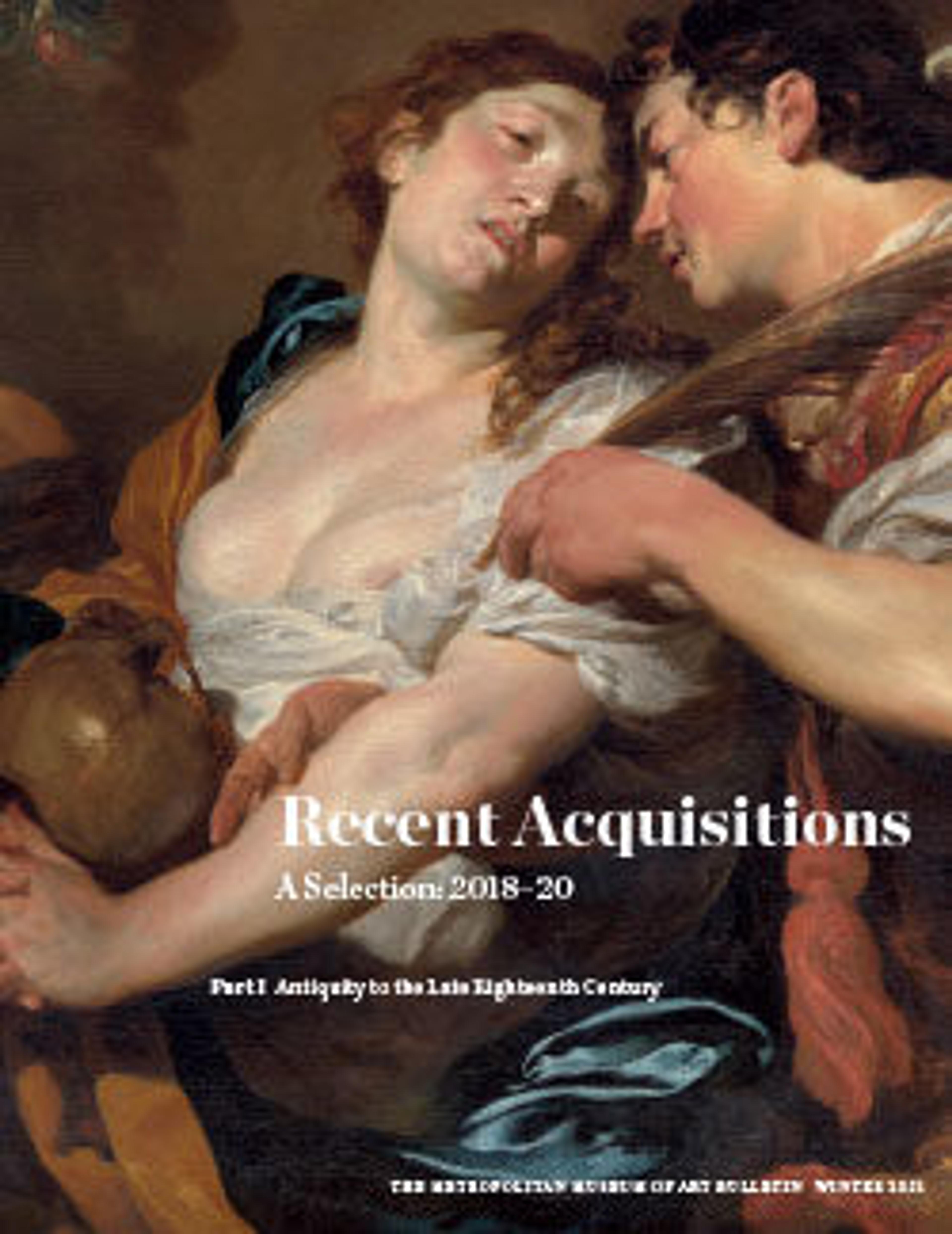Study of Three Fritillaries
This delicate rendering of three fritillaries is one of twenty-seven known drawings of flowers and plants that Saftleven created towards the end of his life. Agneta Block (1629-1704), a niece by marriage of the Dutch poet Joost van den Vondel, commissioned Saftleven as well as a number of other artists to make drawings of the enormous collection of plants and flowers in her countryhouse on the river Vecht called Vijverhof. They were stored in several albums and the known drawings make up only a fraction of the original group. She inscribed the plant's Latin name on the verso of each drawing and on this sheet the inscription "Fritillaria rara specii variae" can be seen through the backing.
The Met has four drawings by Saftleven including another drawing of flowers (2008.46) which dates to three years earlier and does not display the shadows that these do.
The Met has four drawings by Saftleven including another drawing of flowers (2008.46) which dates to three years earlier and does not display the shadows that these do.
Artwork Details
- Title: Study of Three Fritillaries
- Artist: Herman Saftleven II (Dutch, Rotterdam 1609–1685 Utrecht)
- Date: 1683
- Medium: Watercolor
- Dimensions: Sheet: 13 1/4 × 9 5/8 in. (33.7 × 24.5 cm)
- Classification: Drawings
- Credit Line: Gift of Kenneth Grebinar, in celebration of the Museum's 150th Anniversary, 2019
- Object Number: 2019.276.10
- Curatorial Department: Drawings and Prints
More Artwork
Research Resources
The Met provides unparalleled resources for research and welcomes an international community of students and scholars. The Met's Open Access API is where creators and researchers can connect to the The Met collection. Open Access data and public domain images are available for unrestricted commercial and noncommercial use without permission or fee.
To request images under copyright and other restrictions, please use this Image Request form.
Feedback
We continue to research and examine historical and cultural context for objects in The Met collection. If you have comments or questions about this object record, please contact us using the form below. The Museum looks forward to receiving your comments.
